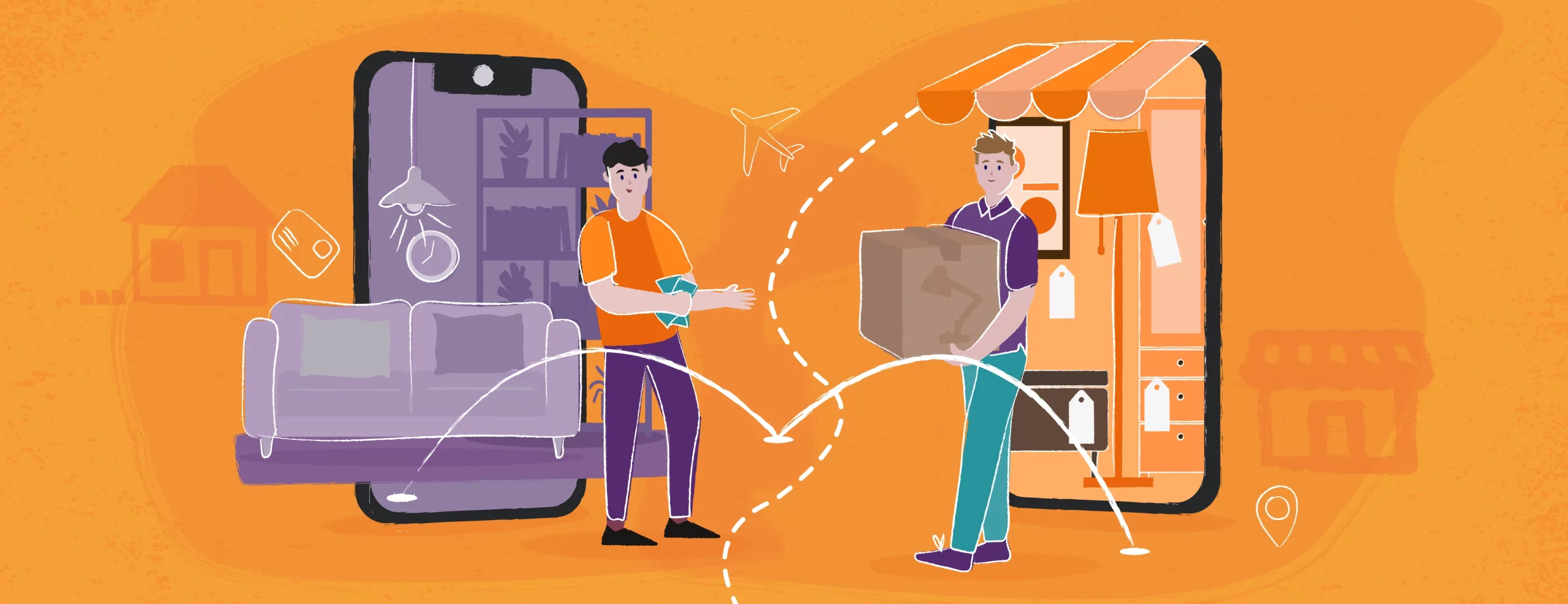Solving the 6 Biggest Challenges in the Furniture Sector
Unless you’re reading this from the far future, we don’t need to tell you that 2023 is not without its share of hurdles. The many problems of 2022 still continue, and even long standing, traditional sectors like the furniture industry are feeling the pressure.
In such times, there is no one simple answer, as the challenges are unique and diverse. Companies need to both embrace new opportunities, but also optimize existing processes to avoid wastage and bring costs down to a minimum.
Now, we wouldn’t be talking about this if we didn’t have a few solutions for you – we’re nice like that 😉 Below you will find what we consider to be the 6 most impactful problems in this sector… but also 6 of the most solvable!
The State of The Furniture Industry as We Know It
At the start of 2023, the furniture sector faced the global economic slowdown that all industries faced. However, the rising cost of raw materials, supply chain issues and the ongoing energy crisis have further impacted furniture businesses around the world.
On top of this, the recent pandemic made the importance of online business paramount. For a sector that long relied on showrooms and in-person sales, digitization of trade in the furniture industry has increased greatly. This is worthy of note when you consider all of the above issues – even when entrepreneurs and CEOs are extremely cautious (and not without good reason!) the awareness and need to go digital remains high.
Of course, digitalization is only valuable when it’s tied directly to business results and not technology for the sake of it. Therefore, we want to advise you on the exact challenges that this sector is facing, and the solutions that can help avoid or conquer them.

1 / Lack of Online Sales Channels
Unlike other sectors – especially those that deal in smaller products – the furniture industry has long been attached to the idea of offline sales. However, even something as stable as the furniture sector can’t avoid the marches of time.
In 2022, 43% of respondents in the United States confirmed that they buy furniture online, of which 25% chose an e-commerce platform and 18% made a purchase directly on the brand’s website. Global overall data shows that 20% of customers buy home decorations, furniture and gardening items online, and almost 40% use both channels. In Poland, in 2022, 14% of furniture sales revenues came from online stores, and by 2025 an increase to 22% is forecast.
Consequently, a lack of an online sales channel puts furniture businesses at a disadvantage when compared to their more advanced competitors. For those that shop only online, checking in with offline counterparts isn’t always a step they think about. An inconvenience for the customer is a direct loss of opportunities for the business.

Of course, we also know that money is not an ever flowing resource for new initiatives so, when planning to expand sales, it is worth betting on solutions that will allow you to do it quickly and with a relatively small investment. A marketplace offer is a good first step. If this formula works, the next step may be to invest in your own e-commerce platform.
2 / Low AOV Per Customer
Expanding – or even sustaining – a business is not just about gaining new customers, but also improving the Customer Lifetime Value (CLV). In other words, while new customers are of course great and necessary, it’s also worth investing in how much each customer spends with your business overall. If you increase the Average Order Value (AOV) you can increase the overall CLV.


Pricing is usually the biggest barrier here and, more so, in an area such as the furniture industry, this is a bigger hurdle. Customers typically buy less frequently and are less prone to impulse purchase (unless we’re talking about Ikea meatballs 😉 ), but there are opportunities. Specifically:
- For the AOV, we can implement dynamic pricing to make each basket just a little bigger overall.
- We can then also implement new products designed for up-selling that are directly related to the ‘core’ offer of the business.
- These in turn will encourage customers to add to their baskets, or come back more frequently, thus giving the CLV a chance to grow.
For example, if you specialize in the production and sale of living room furniture, you can enrich your offer with additional complimentary products, such as interior design elements. At the right price, this will encourage customers to either shop more often or to improve the AOV.
However, this can only work if you have a proper and thorough understanding of consumer preferences. At the beginning, simply having addition products in a “like-for-like” categorization will work but, in the long run, an automated machine learning application built on your customer data will provide the best way to scale.
3 / Limited Market Potential
On the other side of the CLV topic, there is ultimately a limit to how much potential any market can have. This is limitation is felt especially strongly during the current crisis, where additional frugality and price sensitivity of customers has increased. The resulting purchases are less frequent, or smaller in value, so there is an inevitable limit of the CLV.
However, the furniture industry is not beholden to any one market. After all, Polish industry leaders export their goods on a huge scale, occupying the position of the fourth largest exporter of furniture in the world. You don’t need to be an industry giant like Ikea to embrace a cross-channel business model.
We won’t lie – opening up to new markets is not free, but it’s arguably more cost effective than you realize. People are willing to wait for their furniture, unlike their groceries, so it’s more about adapting your existing e-commerce architecture (see point 1) for multiple markets.
On top of the existing functionalities, you need to consider different language versions. As many as 76% of customers are more likely to buy products if information is provided in their native language and native or multilingual customer service is essential for enhancing your brand’s impact on those markets.
Of course, you also need to adapt to new currencies and the integration of cross-border logistics, but that’s readily supported in today’s tech landscape. Headless commerce platforms, specifically, allow for the freedom of both design and multiple websites/stores, while their supportive such as PIM readily support multiple languages.

The one thing you may discover, however, is that shopping habits and preferences change depending on the markets. This is certainly true for furniture: shoppers in the UK prefer upholstered and floral patterned units, while North American shoppers prefer large, solid pieces and Israeli shoppers have shown a strong aversion to wooden upholstery. That’s also why we hinted at the implementation of effective data solutions before we got to this point 😉
4 / Unoptimized Processes
As a company grows, the number of repetitive tasks and processes also grows. Areas such as sales, marketing, data analysis and customer relations all increase in scale. This often leads to two common problems.
- Tasks are impossible to achieve in the assumed time at such an increased volume.
- Mistakes start to get made due to rushing key tasks, or information getting lost across different areas of the company
With automation, you can optimize your workflow by reducing manual efforts. The result is an increase in the efficiency of the entire organization, as well as increased security, reduced errors and greater stability of systems. Such action is a solid foundation on which you can build further development or wait out a more difficult time being sure that everything will function properly.
5 / Outdated IT Infrastructure
While being online is important, it’s also worth noting that outdated IT infrastructure can cause a lot of problems. As we mentioned, headless platforms are ideal for cross-channel growth so what happens if you end up with an old fashioned monolith or server-based system?
With increased demand, such platforms drop in performance, the system can become unstable and the costs of growth outweigh the benefits.
The first step many companies make in this situation is to move infrastructure to the cloud. This can bring some immediate benefits in regards to resource flexibility, automatic scaling both up and down and a greater ability to optimize your costs.
Logically, the next step is to embrace cloud-native elements that allow for more granular adjustments. Tools provided by AWS for their own platform, for example, enable companies to only pay for direct usage (for example, through both microservice and serverless functionalities) so that individual parts of the business scale up and down in line with real-time demand.
*It’s also, FYI, a great way to maintain high performance in your foreign markets thanks to edge locations 😉
6 / Future Uncertainties
Ultimately, nobody can foretell the future, but a highly educated guess is better than nothing. For the furniture industry, where every unit has a high cost of production and every unsold unit only adds to ongoing costs, any reliable indicators are a must. And for this, we can turn to our old friend Mr Data Solutions.

Forecast demand tools are prevalent in many markets, and it’s time for the furniture sector to follow suite. Through using both your own data and any other available information, a forecast demand solution can identify when demand peaks and drops (including between different countries and/or markets) and advise you on the anticipated units to product. This ensures you are both more likely to have the desired products to sell, and also avoid unnecessary inventory management costs for the unpopular or out of season goods.
Unpacking & Assembling Your Strategy
We understand that this is a lot to take in. But the key to a successful strategy is just like assembling your own furniture: step-by-step, with all the right parts and hopefully not in Swedish.
Yet it’s worth remembering that every crisis is not only about threats but also opportunities – primarily for those that tackle the threats head on. Often, a quick response to the most important market needs and challenges can provide a strong advantage. We can also speak to the inevitable march of technology and that, in the long run, optimizing existing processes and creating new digital business models has been a long time coming. Such a well-developed and flexible strategy isn’t just to get over this current hurdle, but to win the race in the long run.








